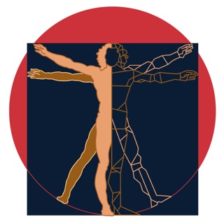This is a continuation of Prof. Manny Riguera’s article on the Major changes in the 2011 Philippine bar exams. If you want to view “Major Changes in the Bar Examination: Impact on bar exam review and coaching – Part 1” click here. We continue with part 2 of this very interesting silver dollars worth article.
Use of multiple-choice questions
A seismic shift in the format of the bar examination is the forthcoming use of multiple-choice questions in the 2011 bar exam. This is patterned after the Multistate Bar Exam (MBE) given in the United States which consists of multiple-choice questions.
The evident purpose of using MCQs is to make more objective the correction of answers. Appreciation of answers to standard problem-type questions tends to be subjective and parity in grading standards is far from guaranteed. Justice Abad also stated that the use of MCQs is a better measure of an examinee’s knowledge of the law since an examiner can ask 200-300 questions and can cover more topics, unlike the standard problem-type questions in which about only 15-20 questions may be asked.
Justice Abad did not give a definitive figure for the number of MCQs to be asked or the time allowed the examinees for answering the MCQs. In the United States, the MBE consists of 200 questions to be answered in 6 hours. In the morning session of 3 hours, the examinee has to answer 100 questions, and in the afternoon he has to answer another 100 questions in 3 hours. This means that on average an examinee has about 1 minute and 48 seconds for each question.
Basic format of a multiple-choice question
An MCQ consists of a stem and four choices or “picks.” A stem may either be a question or an incomplete statement. The choices consist of either (1) answers to a question, or (2) a word, phrase, sentence or sentences which will complete the statement.
An example of a stem which consists of a question is as follows:
1. P filed an unlawful detainer case against D before the MeTC of Manila. D filed an answer in which he raised a counterclaim that P borrowed P350,000 from him (D) for bar review expenses. What defense may P raise against D’s counterclaim?
A. The MeTC has no jurisdiction over the counterclaim.
B. D did not pay the docket fee for the counterclaim.
C. The counterclaim is a pleading which is not allowed.
D. The counterclaim is in excess of P200,000.
An example of a stem which consists of an incomplete statement is the following:
1. An order confirming the foreclosure sale may be appealed within ___ days from notice.
A. 60.
B. 15.
C. 30.
D. 5.
Justice Abad said that for 2011, an MCQ would ask the examinee to pick the correct answer, rather than the best answer. Choices like “all of the above,” and “none of the above,” will not be used, at least for 2011, although they may be used in the 2012 or succeeding bar exams.
Use of distractors
According to Justice Abad, while there is only one correct answer among the four choices, the other three would have the appearance of correctness or would be “plausibly” correct. The 3 incorrect choices which are plausibly correct are called “distractors.” The distractors should be plausibly correct, otherwise, the MCQ would be too easy.
For instance in the first MCQ given, many of my students picked A. This is plausibly correct; however the correct choice is C. Under Section 4, Rule 70 of the Rules of Court, the only pleadings allowed to be filed under Rule 70 are the complaint, compulsory counterclaim and cross-claim pleaded in the answer, and the answers thereto. The counterclaim is permissive and is thus a pleading which is not allowed under Rule 70.
A is not correct because the MeTC is in Manila and hence the jurisdictional amount is P400,000, not P300,000. B is not correct because it wrongly assumes that the MeTC may entertain the counterclaim once the docket fees are paid. D is not correct because it is based on a wrong premise, that is, the jurisdictional amount is P200,000 when it is P400,000.
MCQs of 3 types
According to Justice Abad, there are 3 types of MCQs: (1) know-and-recall MCQs, (2) MCQs which test the examinee’s understanding, and (3) analyze-and-solve MCQs.
Knowledge and recall
The first type of MCQ seeks to test the examinee’s ability to know and recall a specific law or legal principle. In drafting the MCQ, the examiner will employ a specific law or legal principle as a proposition. The first part of the proposition will then be the stem and the second part will be among the choices.[1] An example of this type of MCQ is as follows:
An action quasi in rem is:
A Binding upon the whole world.
B A mix of a real and a personal action.
C Directed against particular persons but seeks the sale or disposition of defendant’s property.
D An action in personam involving real property.
The proposition in the mind of the examiner is “an action quasi in rem is directed against particular persons but seeks the sale or disposition of defendant’s property.” The examiner uses the first part as the stem, and then embeds the second part as one of the choices among four plausibly correct answers.
A “knowledge and recall” question mainly tests a examinee’s rote memory or ability to regurgitate legal knowledge, which while not trivial is on the low end of lawyerly skills. Hence the bar exam will devote only 20% of all MCQ items to “knowledge and recall” questions.[2]
Understanding
This type of MCQ goes beyond a mere know-and-recall query by testing whether an examinee truly understands a specific law or legal principle by relating the law or legal principle to specific situations. An example is given below:
The best evidence rule bars the presentation of
Photocopy of a marked money used in a buy-bust.
Testimony of plaintiff as to defendant’s answer to plaintiff’s question about the contents of a letter.
Photocopy of a print-out of an email message.
Testimony of a witness as to what the defendant texted him.
This type measures a higher grade of skill than just knowing and recalling laws. The examinee is measured not only on his textual knowledge of the best evidence rule but also on his ability to apply the rule to specific fact scenarios. 40% of the MCQs will consist of this type.[3]
Analyze-and-solve MCQs
The analyze-and-solve MCQ tests the quintessential skill of a lawyer: his ability to analyze a hypothetical case or problem, to determine the applicable law, and to reach a conclusion or opinion. 40% of the MCQs shall be of this type of MCQ.[4] The MCQ consists of a fact-pattern of a hypothetical problem, followed by the call of the question, then by the four picks. An example of an analyze-and-solve MCQ is given below:
Although more than 3 months had already lapsed from service by the Defendant of his answer, the Plaintiff had not yet moved that the case be set for pre-trial. The Defendant moved that the complaint be dismissed for failure to prosecute. May the court grant the motion?
Yes, Plaintiff has the duty to move that the case be set for pretrial.
No, the Defendant should have moved that the case be set for pretrial.
No, the court should simply order the Plaintiff to move that the case be set for pretrial.
No, the clerk of court shall issue a notice of pretrial.
The analyze-and-solve MCQ is the one closest to the typical problem-type question found in previous bar exams. However instead of the examinee writing out the answer, he will have to pick the same from four plausible choices.
Stay tuned to updated in the major changes in the 2011 Philippine bar exams – Click here for more on “Major Changes in the Bar Examination: Impact on bar exam review and coaching – Part 3“
 Hi ! my name is Zigfred Diaz. Thanks for visiting my personal blog ! Never miss a post from this blog. Subscribe to my full feeds for free. Click here to subscribe to zdiaz.com by Email
Hi ! my name is Zigfred Diaz. Thanks for visiting my personal blog ! Never miss a post from this blog. Subscribe to my full feeds for free. Click here to subscribe to zdiaz.com by Email
You may also want to visit my other blogs. Click here to learn more about great travel ideas.

Leave a Reply